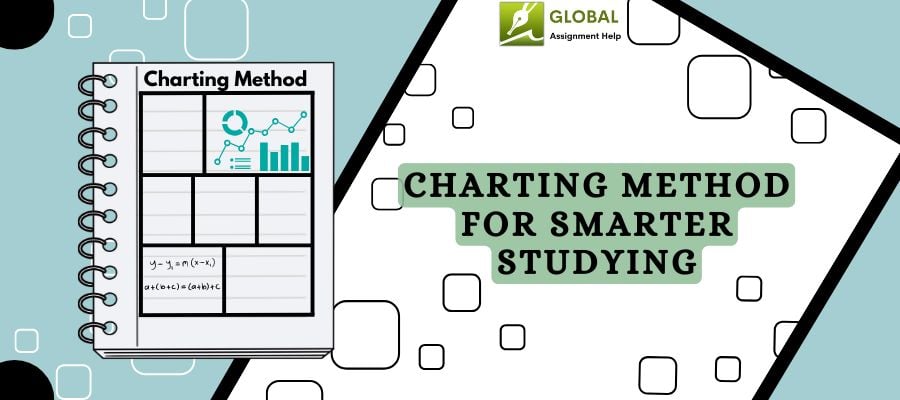An Ultimate Guide To Charting Method For Your Success

Table of Contents
- What Is the Charting Method of Note Taking?
- Why Use the Charting Method for Studying?
- When to Use the Charting Method for Note-Taking?
- Step-by-Step Guide to the Charting Method
- Advantages and Disadvantages of the Charting Method
- Charting Method vs. Other Note-Taking Strategies
- Best Tips to Make Charting More Effective
- Key Takeaways
- Frequently Asked Questions
It is no secret that getting good scores in exams is a cornerstone for attaining success in life. Although you should not measure your capabilities based on the marks you receive, it is necessary that you give your all when sitting for any tests. Keeping with that fact, we bring to you one of the best techniques to take notes when you are studying for exams.
The charting method of note-taking will help you organize your notes in a manner that will prove helpful in your tests. From its meaning to tips on how to use this approach effectively, you will see everything under one roof. So, with that, let’s begin!
What Is the Charting Method of Note Taking?
The charting method of note-taking is a strategic design that includes organizing data into a tabular form of a chart. This method splits your document into columns and rows and also summarizes topics and thoughts for easy comparison. It is like building a spreadsheet, where each column classifies data and each row concentrates on a particular topic.
In addition, this note taking chart format is especially effective for capturing and classifying complex information, making it easier for studying and reviewing. It also diminishes the amount of writing.
In a nutshell, a charting note taking strategy is:
- Structured Categorization:First, data is divided into categories or subjects, each designated to a special column. It creates a clear and precise visual segregation of notions and concepts that permits a quick comparison and contrast across various categories.
- Efficient Data Synthesis:Second, the rows are utilized to list subtopics or particular details under each class. This design also allows for the integration of data and spotting links and patterns across multiple topics and themes.
- Adaptability to Content: This chart method of organizing notes is highly adaptable and can be customized according to the noted content. No matter if it is for academic lectures, a professional setting, or personal study, this design can be adjusted to encompass the vital information effectively.
So, this is what the charting method of note-taking means. Moving forward, let's see why you should use this method for studying.
Chart Your Study SuccessWhy Use the Charting Method for Studying?
There are many methods of note-taking, but you must be wondering what makes this technique the best? Well, to answer your question, we have mentioned six points that tell you why you must pick this charting technique for studying.
Improve Visual Organization
This charting method allows you to organize data into clear and precise columns that make it easy to compare, contrast, and visually retain primary points during revisions.
Increase Focus on Important Facts
When you divide your notes into structured groups, it will help you keep your focus on vital facts, reduce distractions and promote a more effective and targeted studying.
Great for Content-Rich Areas
The charting method of note-taking is best for subjects like law, history, and nursing, as this layout handles vast data with clarity and also eliminates mental overload while revising.
Enhances Recall and Retention
Whenever information is presented in the form of charts, it becomes easy to remember. If you use the charting method for college students, it supports active recall and also strengthens memory through proper repetition and classification.
Simplifies Comparison of Ideas
Chart columns also permit a quick comparison between topics, phrases or methods. It helps to study similarities and distinctions like symptoms or past events.
Saves Time During Review
You, instead of re-reading lengthy paragraphs, can use this charting method as it puts forth data in digestible chunks, which helps you in last-second revisions more efficiently and faster.
Supports Active Learning
To create charts, it needs analysis, organization and synthesis of data. It helps in the active learning process as it deepens your understanding and also promotes better academic results.
So, these are some benefits of charting method that will help you when you are studying. Next, you will glimpse how to use this charting method.
When to Use the Charting Method for Note-Taking?
After knowing why you should use this method for studying, you will see in what fields you can use the charting method of note-taking. So, let's see them.
- Comparative Analysis of Theories:You can use this process when you are comparing various theories or models in your academic subjects.
-
Organizing Historical Events: When you study history, you can use this charting method for organizing and visualizing historical events in chronological order.
-
Study Literary Works:This note-taking method can also be used to analyze and compare themes, characters and symbols in literary works.
-
Synopsis of Scientific Experiments:The Charting method is also valuable for summarizing and presenting data for scientific experiments by creating graphs or charts to showcase outcomes, variables, and trends.
-
Visualizing Mathematical Concepts: You can also apply this process to visualize math-related concepts and relationships.
-
Comparative Analysis of Research Studies:Lastly, you can also utilize this tool for comparing and summarizing research studies, as you can present key results, sample sizes, conclusions, etc.
So, these are some of the fields where you can use this process. If you have any issues in composing a paper on this topic, you can pay for essay writing to our experts.
Step-by-Step Guide to the Charting Method
In this section, you will see how to use this method step-by-step. It will help you to incorporate it when you are making and organizing notes for your exams. So, let's see the format along with the charting method of note taking examples.
Determine the Purpose
The first and foremost thing that you must do is identify the goal of your chart and what particular data you want to present or organize. You must also specify the primary groups of variables that you will include in the chart.
Example: Let's say the objective of the chart is to compare the nutritional content of multiple vegetables.
Select the Appropriate Chart Design
Next, you must select the chart design that best suits your objective and the kind of information you want to present. Some widespread chart formats include tables, pie charts, line graphs, and bar graphs.
Example: For comparing nutritional content, a table format will work the best.
Identify the Class and Variables
You must determine the main categories or variables that will form the rows and columns of your chart. You must analyze your materials and try to answer the following:
What is the primary topic of the materials?
What are the subtopics of the materials?
What are the groups of data that can be noted for these topics?
You must also ensure that these groups are relevant to the information that you want to present.
Example:
|
Vegetable |
Vitamins |
Benefits |
|
Potato |
||
|
Ladyfinger |
||
|
Broccoli |
||
|
Spinach |
Collect and Organize the Information
You must gather the essential data for each class and variable, confirming consistency and accuracy. Then you can organize he information logically and systematically.
Example: Gather the nutritional data for each vegetable type, like the number of calories, grams of carbohydrates, and vitamins content.
|
Vegetable |
Vitamins |
Benefits |
|
Potato |
Vitamin C, B6 |
|
|
Ladyfinger |
Vitamin C, K, A |
|
|
Broccoli |
Vitamin C, K, A, E |
|
|
Spinach |
Vitamin K, A, C, E |
Format and Build the Chart
Utilize software or drawing tools to build the chart which is based on the chosen design. Now, you can input the data into the correct cells or sections of the chart.
Example: Build a table with the vegetable kinds as columns and the nutritional content as rows. Fill in the information for each vegetable kind and nutritional element.
|
Vegetable |
Vitamins |
Benefits |
|
Potato |
Vitamin C, B6 |
Boost energy and cognitive functions |
|
Ladyfinger |
Vitamin C, K, A |
Supports a healthy pregnancy |
|
Broccoli |
Vitamin C, K, A, E |
Boost your immune system |
|
Spinach |
Vitamin K, A, C, E |
Enhances blood clotting and bone health |
Improve the Chart
You can also add visual components like colors, labels, and titles to make your chart more visually captivating and easy to comprehend. Moreover, you must consider using legends or annotations to furnish additional explanations or context.
Example: Employ different colors for different nutritional elements so as to make them stand out. Add a title to the chart, like "Nutritional Comparison of Vegetables".
Review and Refine
Lastly, you must double-check the accuracy of the information and the clarity of the chart. You can also make any essential adjustments or improvements to make sure that the data is presented accurately and coherently.
Example: Review the information and the chart to ensure that the nutritional data is correctly written for each kind of vegetable.
So, here it is. Now you have a comprehensive guide on how to use charting for notes. It will help you to organize your notes when you are studying for your exams. However, if you need extra assistance for this topic, you can seek online assignment help.
Advantages and Disadvantages of the Charting Method
After learning the step-by-step process on how to use this specific format, let's look at some gains and flaws of this design. It will help you to make the correct decision as to which method suits you the best. So, let's see the charting method of note taking advantages and disadvantages.
|
Advantages |
Disadvantages |
|
Note Elimination: When you use this method, it allows for minimalistic recording of data. It also makes it easy to compare subtopics. |
Needs Preparation: You have to decide groups and subtopics beforehand, which also limits flexibility. |
|
Structured Organization: Categorizes data logically and also reduces revision and review time. |
Not Suitable for All Topics: Its text-based design can be challenging to work with for STEM subjects that needs visual representations like formulas or graphs. |
|
Quick Data Retrieval: This charting study technique also helps in quick extraction of relevant data, which is perfect for reviewing later or for making notes on a text. |
Hard In Fast-Paced Settings: It is difficult to adapt during lectures or discussions that introduce new topics unexpectedly or fall into the category of unstructured. |
|
Improves Memorization: It also makes easy the study of facts and relationships between topics through its visual format. |
Time-Intensive Setup: It can be a tedious tasks to organize data into charts, and can also be time-consuming as compared to other note-taking methods, like linear. |
|
Dense Content: Makes it perfect for content-rich topics with fast-paced delivery. |
|
|
Efficiency: It also reduces your time on note editing and review/revision. |
|
|
Course Overview: Lastly, this charting note structure also offers a visual summary of an entire course of study on a single paper. |
So, these are some benefits and flaws of charting method of note taking. You can also use this format of note-taking when you are doing your homework, as it will help you to complete your work quickly. However, if you need any help regarding your work, you can also ask our experts if I can pay someone to do my homework. Now, let's move on and see the difference between this note-taking method and others.
Charting Method vs. Other Note-Taking Strategies
There are eight note-taking methods in total, and each is different from the other. However, in this section, you see the difference between charting and the Cornell note-taking method. So, let's start.
|
Characteristics |
Cornell Method |
Charting Method |
|
Layout |
It is split into three sections: cue, notes, and summary |
It organizes data in columns and rows |
|
Outline |
Free-form notes with prompts and summaries |
Highly structured and grouped by topics |
|
Best For |
General lectures, note-taking and reading |
Vast content, comparisons and data-heavy topics |
|
Note Style |
Bulletpoints, paragraphs, and keywords |
Primary points entered under particular headings |
|
Focal Point |
Encourages synopsis and reflection |
Stresses on categorization and quick comparison |
|
Ease of Review |
Pushes reviewing with the help of cues and summaries |
Quick Scanning; perfect for memorization |
|
Ideal Subjects |
Humanities, literature, and social sciences |
Science, nursing, law, history and business |
Best Tips to Make Charting More Effective
You will see in this section how you can make this charting method more effective, especially when you are preparing for exams. It will help you to score well and also reduce stress and anxiety during test time. So, let's see these tips in detail.
Pick the Correct Methods
You must use this methods for topics that require comparison, like diseases, historical events, legal cases or theories. This charting method of note-taking is ideal for fact-heavy and structured content.
Define Clear Column Headings
You must create meaningful, consistent headings like:
Term, Meaning/definition, Reasons, Symptoms, Treatment
You must customize them to match your subject and according to your exam.
Use Bullet Points and Keywords
It will help if you avoid full sentences. You must use short terms and keywords to keep your chart easy to scan and quick for revision.
Colour-Code for Clarity
Use colors to underline key phrases, distinctions or groups. For instance:
Red= Symptoms
Blue= Treatments
Yellow= High-yield exam points
Leave Spaces for Updates
You must design your chart in a manner that leaves space to add more details later. This step keeps the flexibility going for studying and review sessions.
Summarize at the Bottom
Add a quick synopsis or "key takeaways" row at the bottom of each and every chart. It reinforces your understanding of the topic and also helps you during last-minute revisions.
Practice Active Recall
Utilize your charts like flashcards. You can cover one column and try to recall the details. It improves your memory retention through active engagement.
Digitize for Easy Editing
You can also consider making charts in Google Sheets, Excel, or apps like Notion. It allows you to make updates, rearrange, and achieve clearer formatting easily.
Use Visuals When Possible
In addition, you can also add diagrams, icons, or flowcharts to your chart for topics that benefit from visual representation. It is especially useful in medical or technical subjects.
Review Regularly
Lastly, you shouldn't wait until the night before the exam. You must use your chart for weekly reviews, as it helps to reinforce learning and also to spot knowledge gaps early.
So, these are some tips that will not only help you to make this method effective but also help you in charting for exam preparation.
Key Takeaways
Let's look at some pointers that will summarize this entire blog, as it will make it easier for you to understand.
What Is the Charting Method of Note-Taking?
- It is a structured note-taking method where you organize data into rows and columns to compare, contrast and review.
- It is ideal for subjects like law, history, & nursing.
Benefits of the Charting Method
- Improves visual presentation and memory retention.
- Makes it easy to compare ideas, review quickly and concentrate on primary points.
- Boost active learning by needing classification and summarization of data.
Best Use Cases
Ideal for comparing theories, organizing historical events, analyzing literature, summarizing experiments, visualizing mathematics and reviewing research studies.
Step-By-Step Implementation
- Describe your goal and select a suitable chart format.
- Determine primary groups and variables.
- Gather information, create a chart, and improve with visual attributes.
- Review and refine for clarity, precision and completeness.
Pros & Cons
Pros
- Saves time during revision.
- Simplifies vast content.
- Provides a clear visual overview.
Cons
- Time-consuming setup.
- Not suitable for quick or unstructured lectures.
- Less suitable for a few STEM topics.
Comparison with the Cornell Method
- Charting is more focused on comparison and structure; ideal for factual and data-driven topics.
- Cornell is more flexible and reflective: suitable for general note-taking.
Tips to Maximize Effectiveness
- Utilize keywords, bullet points, and color schemes.
- Leave space for updates and a summary at the bottom of the chart.
- Review charts regularly and practice active recall.
- Can also digitize using tools like Excel, Google Sheets, or Notion for flexibility.
Frequently Asked Questions
In What Fields Is the Charting Method Most Effective for Students?
The charting method is most effective when you are studying subjects with facts that require comparison and classification. Those subjects are law, nursing, history, or business. It helps you to organize extensive data visually, as it makes it easier to retain and review.
How Does the Charting Method Help In Memory Retention and Recall?
When you present data in a structured and visual format, it improves active recall and also supports repetitive learning. This layout helps you to identify patterns and links, thus improving your long-term memory.
Can You Use the Charting Method During Live Lectures?
It can be a little challenging to use the charting method during live lectures as it requires predefined classification. Nonetheless, with some preparation or a flexible sample, you can still use it if the content of the lecture is well-structured and predictable.
What Tools Should I Use to Build Digital Charts for Note-Taking?
You can utilize tools and apps like Google Sheets, Microsoft Excel, OneNote or Notion to build digital charts. These platforms allow you to easily edit, colour-code and format as they make your charts more organized, accessible and visually captivating.
Free Tools

Easy to Use Paraphrasing Tool to Simplify Complex Academic Writing
Check Now
Get Structured Outline by Professionals for Your Dissertation
Check Now
Effortlessly manage citations and references with our smart referencing tool
Check NowLatest Blogs

- 27 Nov 2025
- 68 Views

- 26 Nov 2025
- 100 Views

- 24 Nov 2025
- 147 Views

- 21 Nov 2025
- 185 Views
- Plagiarism
- Pricing
- Order Now
- Call Back
- Live Chat

Limited Time Offer
Exclusive Library Membership + Free 300$ Wallet Balance

Get $300 Now
Update your Number






















Thank you for submitting your comment on this blog. It is under approval. We will carefully review your submission and post it on the website.